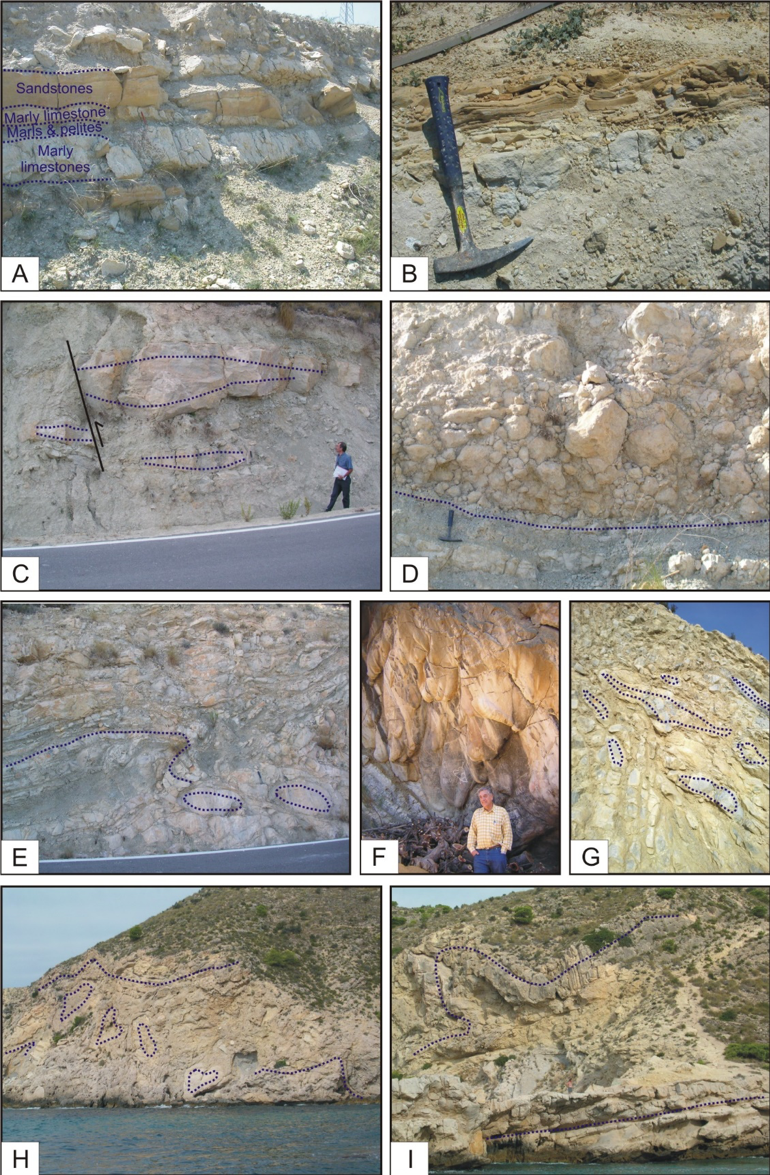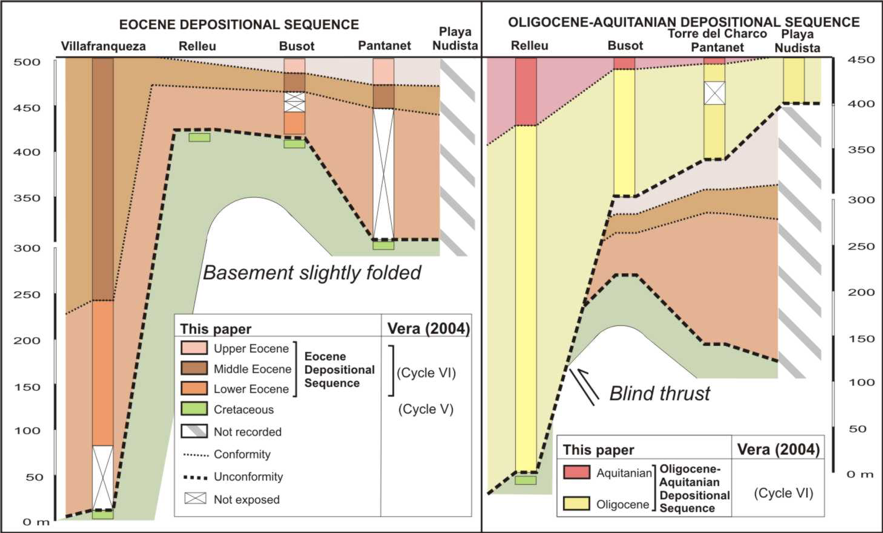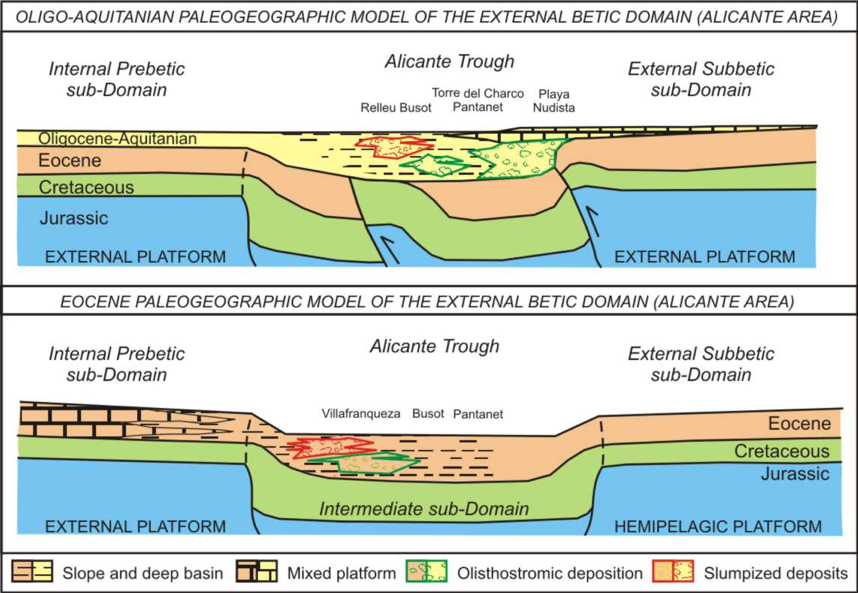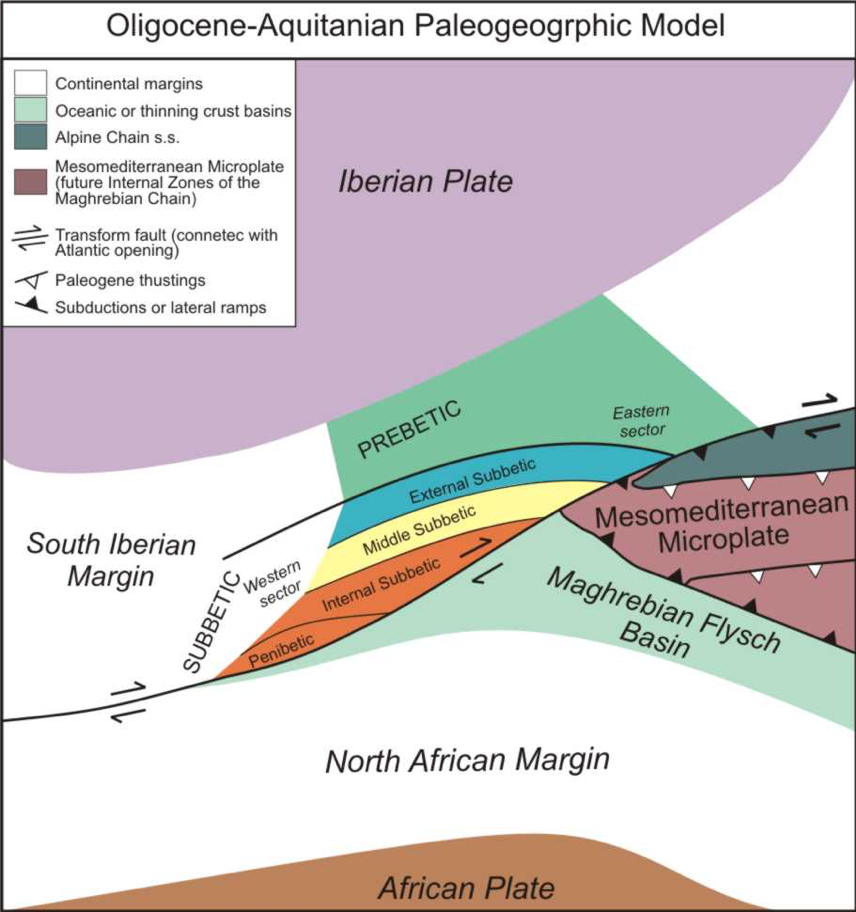Six Paleogene-Aquitanian successions have been reconstructed in the Alicante area (eastern External Betic Zone). The lithofacies association evidences “catastrophic” syn-sedimentary tectonic processes consisting of slumps, mega-olisthostromes, “pillow-beds” and turbiditic deposits (Figure 1).

This kind of sedimentation is related to unconformity surfaces delimiting sequence and para-sequence cycles in the stratigraphic record (Figure 2).

The data compiled have enabled the reconstruction of the Paleogene-Aquitanian paleogeographic and geodynamic evolution of this sector of the External Betics. During the Eocene the sedimentary basin is interpreted as a narrow trough affected by (growth) folding related to blind thrust faulting with a source area from the north-western margin, while the southeastern margin remained inactive. During the Oligocene-Aquitanian, the sourcing margin became the southeastern margin of the basin affected by a catastrophic tectonic (Figure 3).

The activity of the margins is identified from specific sediment sources area for the platform-slope-troughsystem and from tectofacies analysis. The southeastern South Iberian Margin is thought to be closer to the Internal Betic Zone, which was tectonically pushing towards the South Iberian Margin. This pushing could generate a lateral progressive elimination of subbetic paleogeographic domains in the eastern Betics (Figure 4).

This geodynamic frame could explain the development of such “catastrophic” tectono-sedimentary processes during the Late Oligocene-Early Miocene.